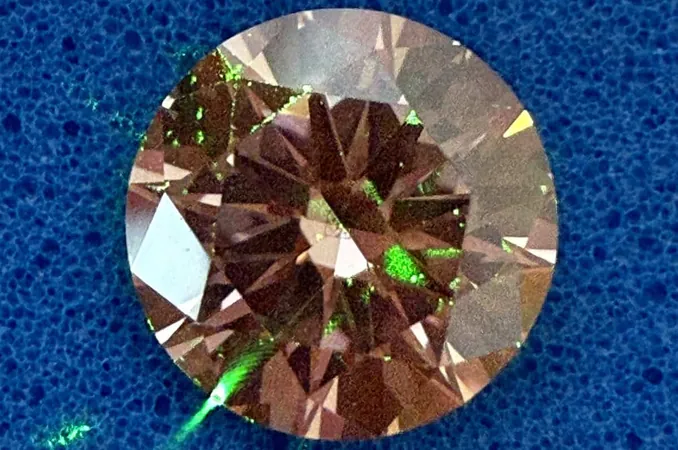
Revolutionary Diamond Magnetometer Set to Transform Cancer Detection
2025-09-22
Author: Mei
A Game-Changer for Cancer Diagnosis
Scientists at the University of Warwick have unveiled a groundbreaking diamond-based magnetometer that could reshape how we detect metastatic tumors during keyhole surgeries. This ultra-sensitive device, currently measuring just 1 cm in diameter, is specifically engineered to identify small cancer metastases through advanced endoscopic techniques.
Why Early Detection Matters
According to physicist Gavin Morley, who spearheaded the research alongside his doctoral student Alex Newman, timely detection of metastasized tumors is crucial for effective treatment. When tumor cells spread from their original site, it's a dire situation. Early detection, especially in lymph nodes, significantly enhances the chances of successful intervention, he clarifies.
Current Methods vs. New Solutions
Existing imaging techniques like MRI and CT scans can only spot tumors that are at least 2 mm thick, while methods like sentinel lymph node biopsy can detect tumors as minuscule as 0.2 mm. However, these traditional approaches come with challenges, including radioactive tracers that necessitate stringent safety measures and blue dyes that may provoke allergic reactions in some patients.
Innovative Application of Magnetic Tracers
A recent clinical technique by Endomag involves injecting a magnetic tracer into breast cancer tumors to identify metastatic cells located in lymph nodes, but the current detection tools are too bulky for minimally invasive procedures. Morley and his team aim to address this by developing a compact magnetometer tailored for precise tumor detection in various cancer types, with colorectal cancer reportedly at the forefront of their focus.
How It Works—The Science Behind the Sensor
Utilizing diamonds embedded with nitrogen-vacancy (NV) centers, which are sensitive to external magnetic fields, this magnetometer works by detecting emitted fluorescent light to measure these fields. Morley adds, Our team specializes in using optical fibers to deliver laser light into the diamond, capturing the red light that returns, which helps us gauge the magnetic environment around the sensor.
Expanding Horizons in Healthcare and Beyond
The Warwick researchers are not only focused on healthcare applications. They are investigating uses in space exploration and future fusion energy systems. Collaborating with medical professionals, such as breast cancer surgeon Stuart Robertson, they believe that their innovative magnetometer can significantly improve the detection of metastatic cells, revolutionizing cancer treatment.
Future Goals and Advancements
Currently, efforts are underway to miniaturize the device even further, potentially reducing its size to just 3 mm. While 1 cm is already suitable for keyhole surgeries, a smaller sensor could pave the way for advancements in various surgical procedures, enhancing patient care and treatment outcomes.
Collaboration for Innovation
In partnership with multiple surgeons, Morley and Newman are advancing their work as part of the UK Quantum Biomedical Sensing Research Hub (Q-BIOMED). With ambitious plans to spin out a dedicated company, they are poised to change the landscape of medical diagnostics using their novel diamond sensors.


 Brasil (PT)
Brasil (PT)
 Canada (EN)
Canada (EN)
 Chile (ES)
Chile (ES)
 Česko (CS)
Česko (CS)
 대한민국 (KO)
대한민국 (KO)
 España (ES)
España (ES)
 France (FR)
France (FR)
 Hong Kong (EN)
Hong Kong (EN)
 Italia (IT)
Italia (IT)
 日本 (JA)
日本 (JA)
 Magyarország (HU)
Magyarország (HU)
 Norge (NO)
Norge (NO)
 Polska (PL)
Polska (PL)
 Schweiz (DE)
Schweiz (DE)
 Singapore (EN)
Singapore (EN)
 Sverige (SV)
Sverige (SV)
 Suomi (FI)
Suomi (FI)
 Türkiye (TR)
Türkiye (TR)
 الإمارات العربية المتحدة (AR)
الإمارات العربية المتحدة (AR)